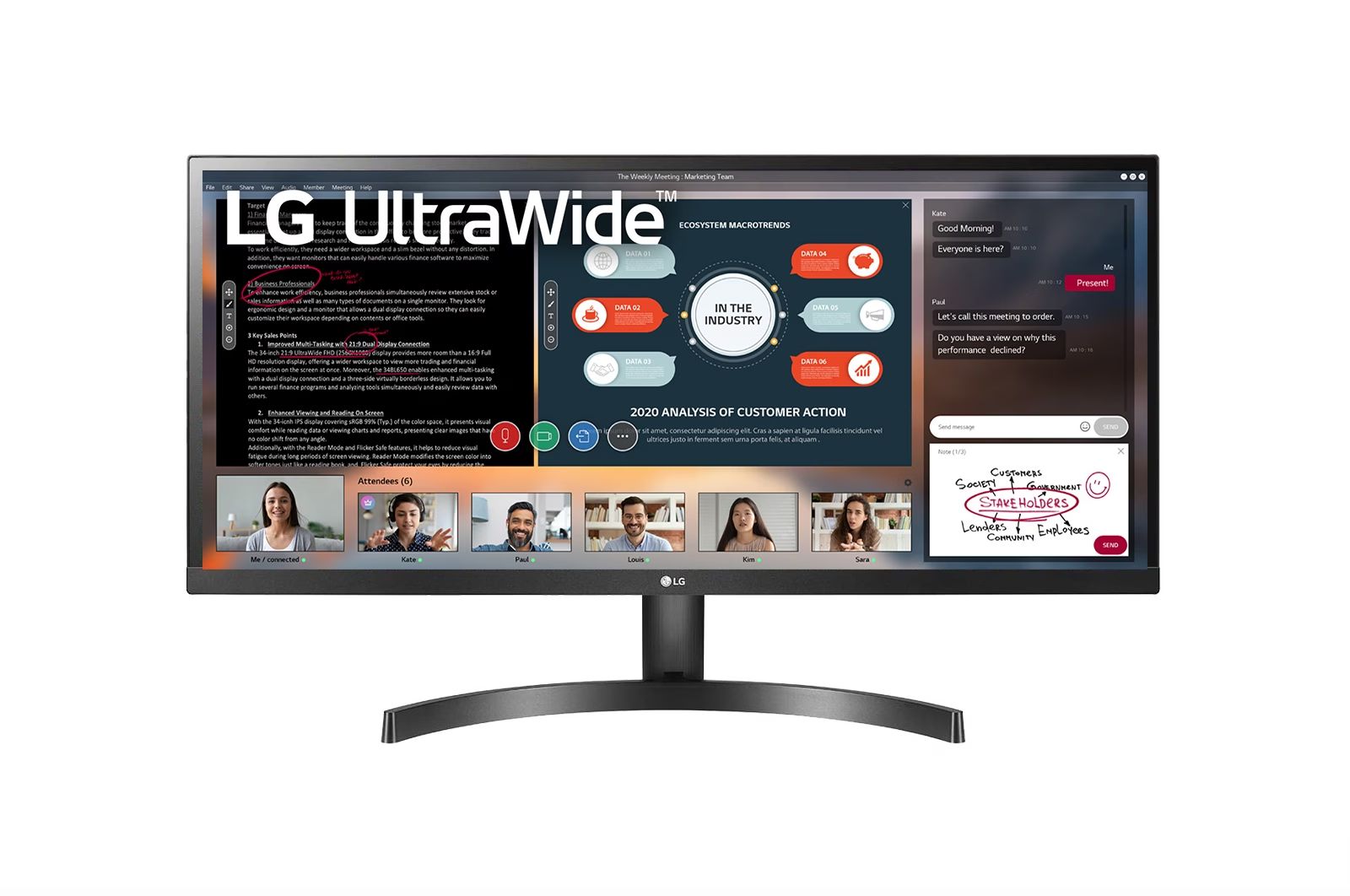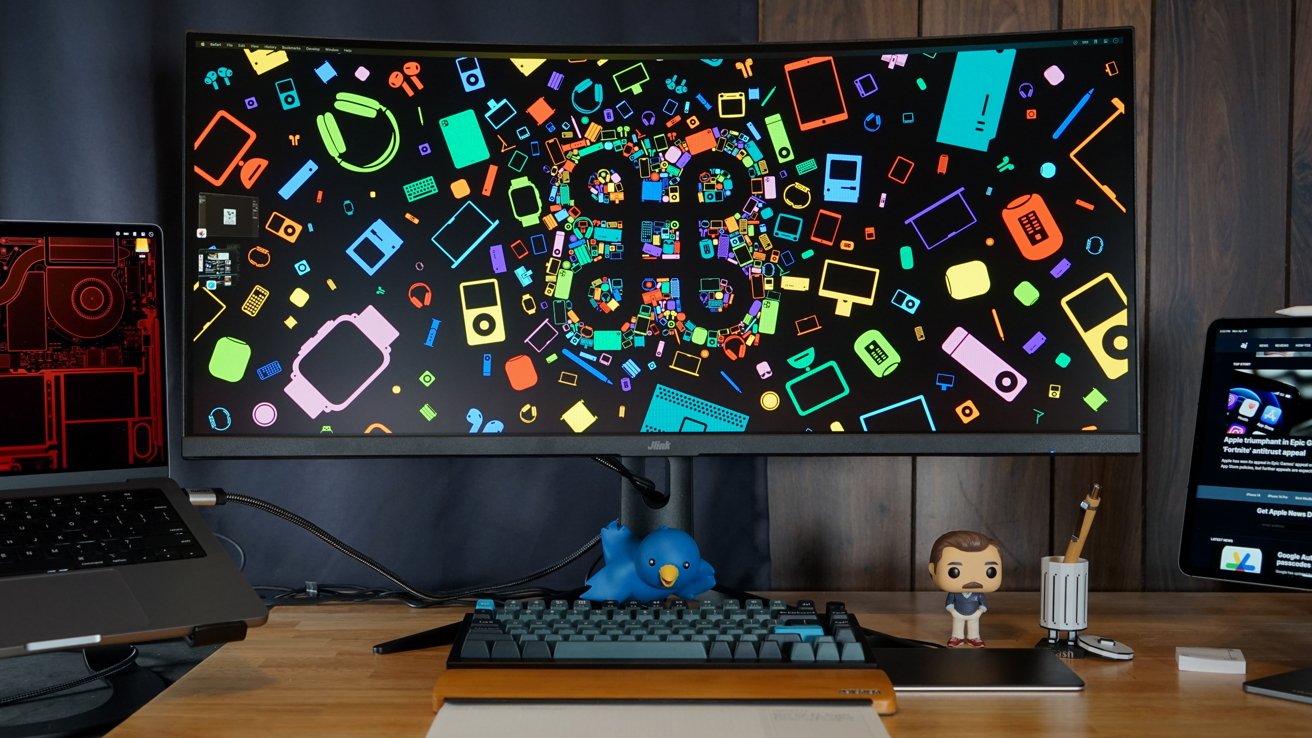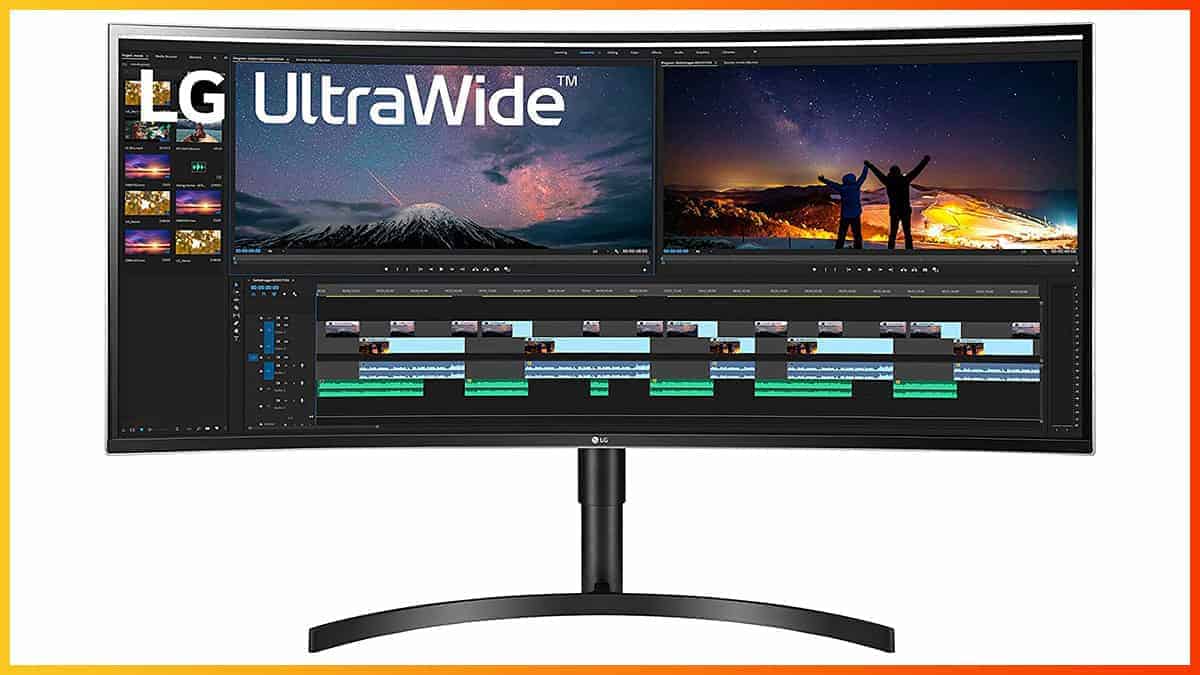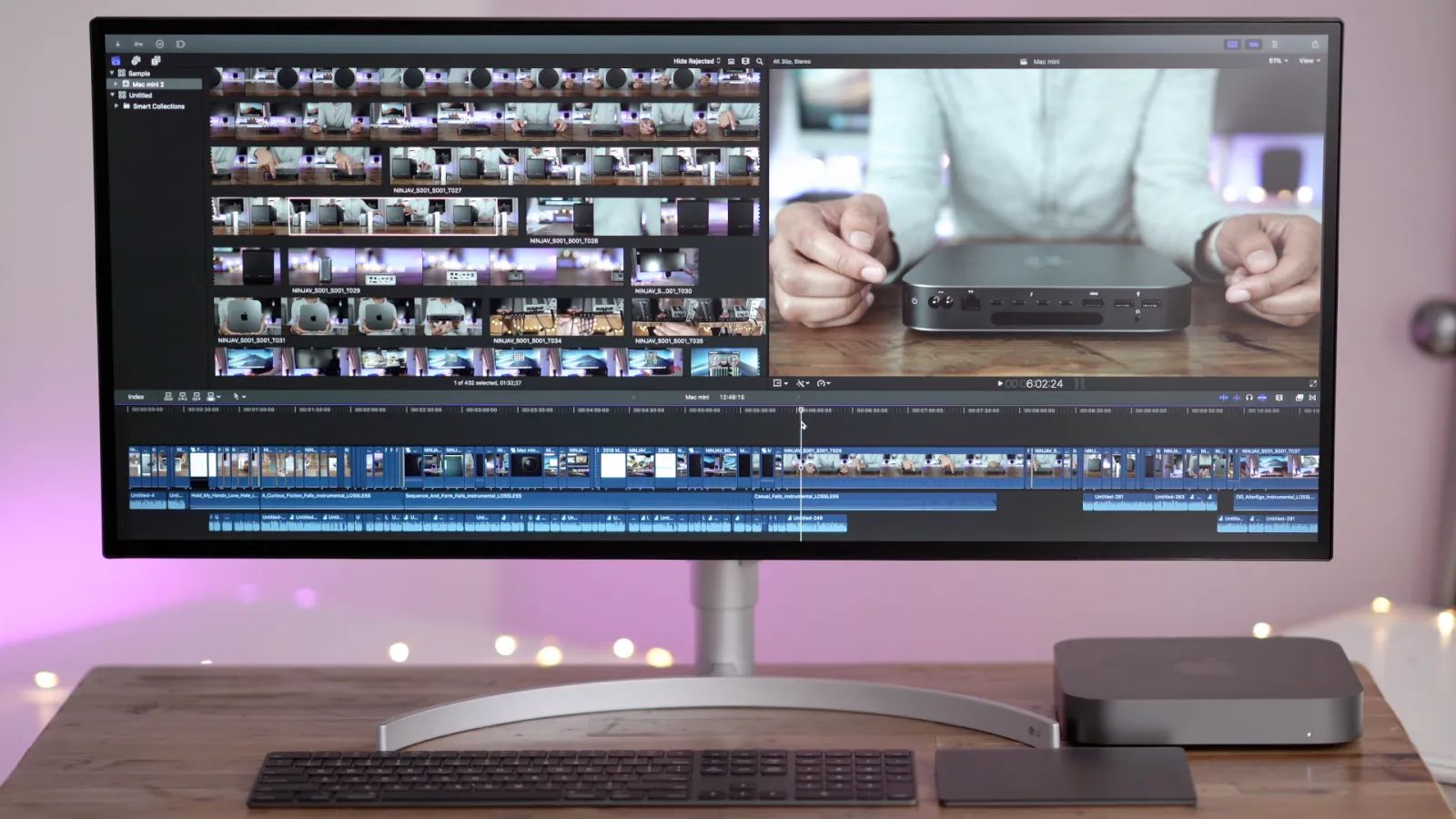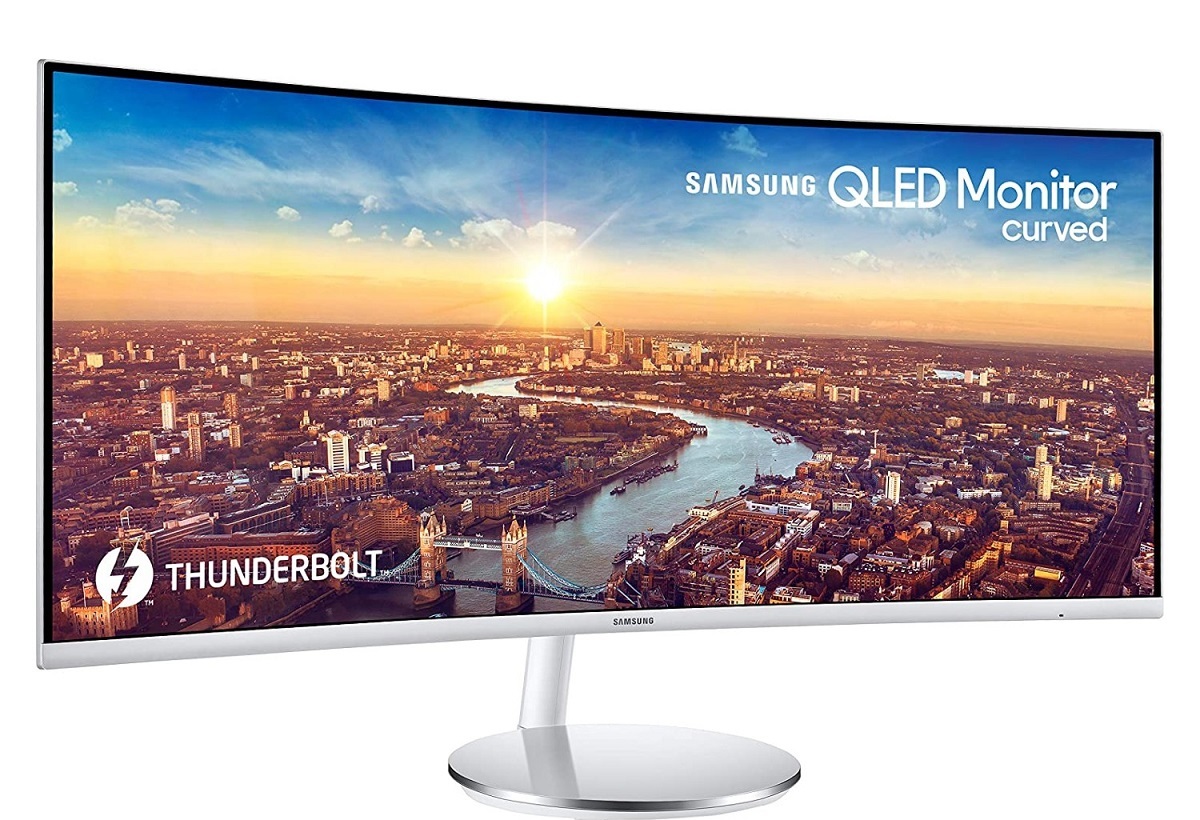Introduction
Connecting a MacBook Pro to an LG Ultrawide Monitor can greatly enhance your productivity and multimedia experience. Whether you need a larger display for work, gaming, or entertainment purposes, the seamless integration of these two devices can provide you with a stunning visual experience.
LG Ultrawide Monitors are known for their immersive wide aspect ratio and high resolution, making them an ideal choice for multitasking and content creation. With their sleek design and advanced features, they are a perfect match for the sleek and powerful MacBook Pro.
However, connecting a MacBook Pro to an LG Ultrawide Monitor may seem daunting if you are not familiar with the necessary steps and cables involved. In this guide, we will walk you through the process of connecting your MacBook Pro to an LG Ultrawide Monitor, ensuring a smooth and hassle-free setup.
From determining compatibility to adjusting display settings, we will cover everything you need to know to get your MacBook Pro up and running with your LG Ultrawide Monitor. So, let’s dive in and discover the wonders of this powerful combination!
Step 1: Check the Compatibility
Before diving into the setup process, it is crucial to ensure that your MacBook Pro is compatible with the LG Ultrawide Monitor. Compatibility issues can arise due to differences in connection ports and software requirements. Here are a few things to consider:
1. Check the ports: Most modern MacBook Pro models come equipped with Thunderbolt 3 or USB-C ports. LG Ultrawide Monitors typically support DisplayPort or HDMI inputs. Ensure that the monitor has the necessary ports to connect to your MacBook Pro. If there is a mismatch, you may need to purchase an adapter or dongle to bridge the gap.
2. Verify the resolution and refresh rate: Check the maximum resolution and refresh rate supported by both your MacBook Pro and the LG Ultrawide Monitor. It is essential to match these specifications to ensure optimal performance. If the monitor’s resolution or refresh rate exceeds what your MacBook Pro can handle, you may not achieve the desired visual quality.
3. Consider macOS compatibility: Ensure that your MacBook Pro’s operating system is compatible with the LG Ultrawide Monitor. Check the manufacturer’s website or user manual for information on supported macOS versions.
4. Check for hardware requirements: Some LG Ultrawide Monitors may require additional hardware, such as a specific graphics card or driver, for optimal performance. Verify if any such requirements exist and ensure that your MacBook Pro meets them.
By conducting a compatibility check, you can avoid any last-minute surprises or compatibility issues during the setup process. Take the time to thoroughly research the compatibility of your MacBook Pro and the LG Ultrawide Monitor to ensure a seamless connection and a superior visual experience.
Step 2: Gather the Necessary Cables and Adapters
Once you have confirmed the compatibility of your MacBook Pro and the LG Ultrawide Monitor, the next step is to gather the necessary cables and adapters for the connection. Here are the items you may need:
1. Thunderbolt 3/USB-C Cable: Depending on the ports available on your MacBook Pro and the LG Ultrawide Monitor, you may need a Thunderbolt 3 or USB-C cable. Ensure that the cable is of high quality and capable of transmitting data and video signals.
2. Adapter or Dongle: If your MacBook Pro or the LG Ultrawide Monitor has a different port than the cable you have, you may need an adapter or dongle. For example, if your MacBook Pro has a Thunderbolt 3 port but the monitor only supports HDMI, you will need a Thunderbolt 3 to HDMI adapter. Make sure to choose an adapter or dongle that supports the required resolution and refresh rate.
3. HDMI or DisplayPort Cable: If your MacBook Pro and the LG Ultrawide Monitor both have compatible ports, you may only need an HDMI or DisplayPort cable to establish the connection. Again, ensure that the cable is capable of transmitting high-quality video signals.
4. Power Cable: Don’t forget to gather the power cable for your LG Ultrawide Monitor. Most monitors come with an AC power cord that needs to be connected to a power outlet.
It’s essential to use high-quality cables and adapters to ensure a stable and reliable connection between your MacBook Pro and the LG Ultrawide Monitor. Cheap or low-quality cables can result in poor video quality, flickering, or even the inability to establish a connection. Invest in reliable cables and adapters to avoid any potential issues.
Now that you have gathered all the necessary cables and adapters, you’re ready to move on to the next step: connecting your MacBook Pro to the LG Ultrawide Monitor.
Step 3: Connect the MacBook Pro to the LG Ultrawide Monitor
With the compatible cables and adapters at hand, it’s time to connect your MacBook Pro to the LG Ultrawide Monitor. Follow these steps to establish the connection:
- Turn off both devices: Before connecting any cables, make sure to turn off your MacBook Pro and the LG Ultrawide Monitor. This will prevent any potential damage during the setup process.
- Connect the cable to the MacBook Pro: Take the appropriate cable (Thunderbolt 3 or USB-C) and connect one end to the corresponding port on your MacBook Pro. Ensure a secure connection.
- Connect the other end to the LG Ultrawide Monitor: Take the other end of the cable and connect it to the appropriate port on the back of the LG Ultrawide Monitor. Use gentle pressure to ensure a secure fit.
- Power on the LG Ultrawide Monitor: Plug the power cable of the LG Ultrawide Monitor into a power outlet. Turn on the monitor using the power button located on the front or side panel.
- Power on the MacBook Pro: Press the power button on your MacBook Pro to turn it on. Give it a moment to boot up.
- Wait for the MacBook Pro to detect the monitor: Once your MacBook Pro is powered on, it should automatically detect the LG Ultrawide Monitor and configure the display settings. This process may take a few seconds or a minute.
- Adjust the display arrangement: By default, your MacBook Pro may extend the desktop to the LG Ultrawide Monitor, giving you more screen real estate. If you want to change the arrangement or adjust other display settings, go to the ‘Displays’ settings in the ‘System Preferences’ on your MacBook Pro.
After following these steps, you should have successfully connected your MacBook Pro to the LG Ultrawide Monitor. Take a moment to ensure that the display is working correctly and that you’re satisfied with the resolution and overall visual experience.
Note that the exact steps and settings may vary slightly depending on the model and macOS version of your MacBook Pro. Refer to the user manual or support documentation of your specific devices if you encounter any issues or need further assistance in the setup process.
Step 4: Adjust Display Settings on the MacBook Pro
Now that you have successfully connected your MacBook Pro to the LG Ultrawide Monitor, it’s time to fine-tune the display settings to ensure the best viewing experience. Here are the steps to adjust the display settings on your MacBook Pro:
- Open System Preferences: Click on the Apple menu in the top-left corner of your MacBook Pro screen and select “System Preferences.”
- Select Displays: In the System Preferences window, click on the “Displays” icon. This will open the display settings for your MacBook Pro.
- Identify the LG Ultrawide Monitor: On the Displays tab, you should see two display thumbnails: one for your MacBook Pro’s built-in display and another for the LG Ultrawide Monitor. Click on the display thumbnail for the LG Ultrawide Monitor to select it.
- Adjust the resolution: In the Display tab for the LG Ultrawide Monitor, you can adjust the resolution to match its native resolution or choose a lower resolution if needed. Higher resolutions provide sharper images, but if the text appears too small, you can decrease the resolution to make it more comfortable for viewing.
- Set the refresh rate: If your LG Ultrawide Monitor supports different refresh rates, you can adjust this setting under the Display tab as well. Higher refresh rates result in smoother motion on the screen, especially important for gaming and video playback.
- Arrange the displays: Drag the display thumbnails in the Displays tab to arrange the position of the MacBook Pro’s built-in display and the LG Ultrawide Monitor. This allows you to configure how the displays are positioned relative to each other.
- Additional settings: Explore other settings available in the Displays tab, such as brightness, color calibration, and Night Shift mode. Adjust these settings based on your preferences and the lighting conditions in your workspace.
Play around with these settings to achieve the desired visual experience and make the most of the LG Ultrawide Monitor’s capabilities. Remember to click the “Apply” button to save any changes you make in the display settings.
It is worth noting that newer versions of macOS may have different layouts or tabs in the System Preferences menu. However, the idea behind adjusting the display settings should remain consistent.
Once you have adjusted the display settings on your MacBook Pro, you’re ready to move on to the next step: configuring the display settings on the LG Ultrawide Monitor itself.
Step 5: Configure the Display Settings on the LG Ultrawide Monitor
After adjusting the display settings on your MacBook Pro, it’s time to fine-tune the settings on the LG Ultrawide Monitor itself. Configuring these settings will help you optimize the display quality and tailor it to your preferences. Follow these steps to configure the display settings on your LG Ultrawide Monitor:
- Access the OSD (On-Screen Display) menu: Press the OSD button located on the LG Ultrawide Monitor to open the menu. The OSD button is usually located on the front or bottom side of the monitor.
- Navigate through the menu: Use the navigation buttons on the monitor to navigate through the OSD menu. The exact buttons and layout may vary depending on your monitor model.
- Adjust brightness and contrast: Look for options to adjust the brightness and contrast levels. Fine-tune these settings to achieve a comfortable and visually pleasing display.
- Configure color settings: Explore options to adjust the color temperature, hue, saturation, and gamma settings. These settings allow you to customize the color accuracy and vibrancy to suit your preference.
- Enable special features: Some LG Ultrawide Monitors come with special features such as black equalizer, motion blur reduction, or gaming modes. Enable these features if they align with your specific needs and enhance your viewing experience.
- Save the settings: Once you have configured the display settings to your liking, look for an option to save the settings in the OSD menu. This will ensure that your adjustments are retained even when you power off the monitor.
By configuring the display settings on the LG Ultrawide Monitor, you can further enhance the visual quality and tailor it to your specific needs. Experiment with different options and find the optimal settings that provide the best experience for your tasks, whether it’s work, gaming, or multimedia consumption.
Remember to consult the user manual or support documentation for your specific LG Ultrawide Monitor model if you encounter any difficulties or need further assistance in configuring the display settings.
Now that you have successfully adjusted the display settings on both your MacBook Pro and the LG Ultrawide Monitor, you’re ready to enjoy the immersive and enhanced visual experience that this powerful combination offers.
Step 6: Troubleshooting Common Issues
While connecting a MacBook Pro to an LG Ultrawide Monitor is usually a straightforward process, you may encounter some common issues along the way. Here are a few troubleshooting tips to help you overcome these challenges:
1. No display on the LG Ultrawide Monitor:
- Ensure that all cables are securely connected to both the MacBook Pro and the LG Ultrawide Monitor.
- Try using a different cable or adapter to rule out any potential issues with the current one.
- Restart both the MacBook Pro and the LG Ultrawide Monitor.
- Verify that the LG Ultrawide Monitor is powered on and set to the correct input source.
2. Incorrect resolution or aspect ratio:
- Open the “Displays” settings on your MacBook Pro and check that the resolution is set to the native resolution of the LG Ultrawide Monitor.
- Ensure that the aspect ratio is correctly set to match the monitor’s native aspect ratio.
- Update the graphics drivers on your MacBook Pro by checking for updates through the macOS system updates.
3. Flickering or unstable display:
- Check the cable connections to ensure they are secure and not damaged.
- Try using a different cable or adapter to rule out any issues with the current one.
- Adjust the refresh rate settings on both the MacBook Pro and the LG Ultrawide Monitor, ensuring they are compatible and set to a stable rate.
- If using an adapter, make sure it is compatible with your MacBook Pro and the LG Ultrawide Monitor.
4. Poor color or image quality:
- Adjust the color settings on both your MacBook Pro and the LG Ultrawide Monitor to your preference.
- Ensure that the monitor is running on the appropriate color profile.
- Consider calibrating the monitor using calibration tools or software to achieve accurate color reproduction.
If you encounter any other issues or the troubleshooting tips above do not resolve the problem, consult the user manual or contact the support channels of your MacBook Pro or LG Ultrawide Monitor for further assistance. They will be able to provide specific guidance based on your device models and configurations.
By addressing these common issues, you can ensure a smooth and optimal experience when using your MacBook Pro with the LG Ultrawide Monitor, allowing you to make the most of the extended screen space and immersive visuals.
Conclusion
Connecting your MacBook Pro to an LG Ultrawide Monitor can greatly enhance your productivity, entertainment, and overall computing experience. By following the step-by-step guide outlined in this article, you can successfully set up and configure the connection between these two devices.
We began by emphasizing the importance of checking compatibility between your MacBook Pro and the LG Ultrawide Monitor. This initial step helps ensure that the necessary ports, resolutions, and software requirements are met, allowing for a seamless connection.
We then discussed the significance of gathering the necessary cables and adapters. Using high-quality cables and adapters is crucial for establishing a stable and reliable connection between your MacBook Pro and the LG Ultrawide Monitor.
The subsequent steps guided you through the actual process of connecting your MacBook Pro to the LG Ultrawide Monitor, adjusting the display settings on your MacBook Pro, configuring the display settings on the LG Ultrawide Monitor itself, and troubleshooting common issues that may arise along the way.
With your MacBook Pro and LG Ultrawide Monitor successfully connected, you can now enjoy an immersive visual experience, enhanced productivity, and the ability to multitask with ease. Whether you’re working on large projects, gaming, or indulging in multimedia content, this powerful combination offers incredible potential.
Remember that specific steps and settings may vary depending on the models and software versions of your MacBook Pro and LG Ultrawide Monitor. Always refer to the user manuals and support resources provided by the manufacturers for the most accurate and up-to-date information.
Now that you have the knowledge and understanding of how to connect and optimize the display between your MacBook Pro and LG Ultrawide Monitor, go ahead and set up this dynamic duo. Elevate your computing experience to new heights and unlock the full potential of your MacBook Pro and LG Ultrawide Monitor combination!










